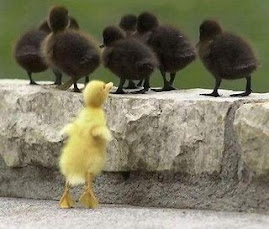The movie is about the inspiration that Nelson Mandela used to unite his nation across the races in the post-apartheid era. He could not accomplish this task as a single leader. He needed to inspire the people of South Africa to want to find common ground. He used the national Rugby club to do it. Only Morgan Freeman could pull this off and not make it completely hokey (plus Clint Eastwood directing). But Mandela did more than just use sports to rally the country. He got people invested in the country and the team was a vehicle for that. The team literally connected with the formerly excluded black population and more importantly, the black population joined the white Afrikaners in supporting this team. By not taking the team away from the white community and finding ways to generate support from the black community, each group met on common ground.
Urban places are divided by race, class, ethnicity, gender, etc. We each have our own reasons for being in that urban space and protect our interests accordingly. This self-interest results in each group trying to maximize their own desires, often without regard to how that will affect others in the urban population.
The movie title is Latin for "unconquered" and is the title of a poem that inspired Nelson Mandela. For me, the urban application is that we cannot make cities some kind of territory to own and people cannot be conquered. Gentrification is often seen as some kind of natural market force that changes a neighborhood from poor to rich and from unproductive property to productive property. While change is fine, make no mistake that gentrification is conquering. But the answer is not resistance - it is finding common ground. Cities must be the model for how people can live together and I'm not trying to be all kum-bay-ah on you here. By this, I mean cities have to have room for all different types of people and for space to be available - not limited. Housing projects are the equivalent of homelands, as are suburbs. If you don't belong, you will be hasseled about being there or not being in your homeland. Cities cannot function this way. Let's learn from Invictus.
Here is the poem by William Henley 1875:
Out of the night that covers me,
Black as the pit from pole to pole,
I thank whatever gods may be
For my unconquerable soul.
In the fell clutch of circumstance
I have not winced nor cried aloud.
Under the bludgeonings of chance
My head is bloody, but unbowed.
Beyond this place of wrath and tears
Looms but the Horror of the shade,
And yet the menace of the years
Finds and shall find me unafraid.
It matters not how strait the gate,
How charged with punishments the scroll,
I am the master of my fate:
I am the captain of my soul.
Mandela had to unite his country across the chasm of black and white, which seemed an impossible task. Surely, we can make cities welcoming and not conquered spaces.








